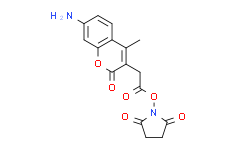Milan Hluchý # 1, Pavla Gajdušková # 1, Igor Ruiz de Los Mozos 2 3 4, Michal Rájecký 1, Michael Kluge 5, Benedict-Tilman Berger 6 7, Zuzana Slabá 1, David Potěšil 1, Elena Weiß 5, Jernej Ule 2 8, Zbyněk Zdráhal 1, Stefan Knapp 6 7, Kamil Paruch 9 10, Caroline C Friedel 5, Dalibor Blazek 11
Affiliations
- 1Central European Institute of Technology (CEITEC), Masaryk University, Brno, Czech Republic.
- 2The Francis Crick Institute, London, UK.
- 3Department of Personalized Medicine, NASERTIC, Government of Navarra, Pamplona, Spain.
- 4Center for Applied Medical Research, University of Navarra, Pamplona, Spain.
- 5Institut für Informatik, Ludwig-Maximilians-Universität München, München, Germany.
- 6Structural Genomics Consortium (SGC), Buchmann Institute for Life Sciences (BMLS), Goethe University Frankfurt am Main, Frankfurt am Main, Germany.
- 7Institut für Pharmazeutische Chemie, Goethe University Frankfurt am Main, Frankfurt am Main, Germany.
- 8UK Dementia Research Institute, King's College London, London, UK.
- 9Department of Chemistry, Faculty of Science, Masaryk University, Brno, Czech Republic.
- 10International Clinical Research Center, St Anne's University Hospital in Brno, Brno, Czech Republic.
- 11Central European Institute of Technology (CEITEC), Masaryk University, Brno, Czech Republic. dalibor.blazek@ceitec.muni.cz.
- #Contributed equally.
PMID: 36104565 DOI: 10.1038/s41586-022-05204-z
Abstract
RNA splicing, the process of intron removal from pre-mRNA, is essential for the regulation of gene expression. It is controlled by the spliceosome, a megadalton RNA-protein complex that assembles de novo on each pre-mRNA intron through an ordered assembly of intermediate complexes1,2. Spliceosome activation is a major control step that requires substantial protein and RNA rearrangements leading to a catalytically active complex1-5. Splicing factor 3B subunit 1 (SF3B1) protein-a subunit of the U2 small nuclear ribonucleoprotein6-is phosphorylated during spliceosome activation7-10, but the kinase that is responsible has not been identified. Here we show that cyclin-dependent kinase 11 (CDK11) associates with SF3B1 and phosphorylates threonine residues at its N terminus during spliceosome activation. The phosphorylation is important for the association between SF3B1 and U5 and U6 snRNAs in the activated spliceosome, termed the Bact complex, and the phosphorylation can be blocked by OTS964, a potent and selective inhibitor of CDK11. Inhibition of CDK11 prevents spliceosomal transition from the precatalytic complex B to the activated complex Bact and leads to widespread intron retention and accumulation of non-functional spliceosomes on pre-mRNAs and chromatin. We demonstrate a central role of CDK11 in spliceosome assembly and splicing regulation and characterize OTS964 as a highly selective CDK11 Inhibitor that suppresses spliceosome activation and splicing.





 沪公网安备31011402010657号
沪公网安备31011402010657号